Posts Tagged ‘Zhujiajiao’
-
A HIDDEN BEAUTY SPOT
In contrast to the city of Beijing, wherein we visited some of the most splendid sites of Chinese historical significance, Shanghai seemed bound to impress us with its ultra modern, cosmopolitan character and its new high rises. Even though we were informed that a number of old structures in Shanghai were being preserved in order to conserve the roots of this area, our initial general impression was that the new buildings had taken over considerably its Chinese origins.
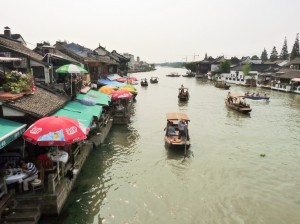 Therefore, it was quite a pleasant surprise to learn that tucked safely away at relatively short distances from this avant-garde city, one could still find a wide selection of ancient water towns which offer the opportunity to relish the charm of an ancient China. Known as the ‘Little Venices of the East’, these unique towns of exceptional allure are a wonder of cultural landscape. A visit to at least one of them, is definitely a must once you are in Shanghai.
Therefore, it was quite a pleasant surprise to learn that tucked safely away at relatively short distances from this avant-garde city, one could still find a wide selection of ancient water towns which offer the opportunity to relish the charm of an ancient China. Known as the ‘Little Venices of the East’, these unique towns of exceptional allure are a wonder of cultural landscape. A visit to at least one of them, is definitely a must once you are in Shanghai.Since we had only one day left in Shanghai, our guide led us to Zhujiajiao which is located only forty seven kilometers away from this city, in the district of Qingpu. With a history of around 1700 years, Zhujiajiao is renowned as one of the best preserved ancient water towns of the area. Like much of the other sites in China, once we got there, we found the place pretty crowded, especially since on that day, the local people were celebrating the Mid-Autumn Festival. Indeed, during public holidays, these water towns are very popular with Shanghai residents who yearn for moments of tranquility, away from the hustle and bustle of the urban areas.
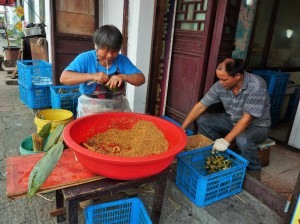 The settlement of Zhujiajiao dates back to the Yuan dynasty, when this location was turned into an important trading hub for the surrounding countryside. Since it is strategically situated at the intersection of a number of local rivers, Zhujiajiao continued to gain significance, and during the reign of Emperor Wanli of the Ming dynasty, it was granted township status. The town prospered by trading rice and cloth which were transported on boats from the surrounding countryside, right to the houses of the Zhujiajiao merchants.
The settlement of Zhujiajiao dates back to the Yuan dynasty, when this location was turned into an important trading hub for the surrounding countryside. Since it is strategically situated at the intersection of a number of local rivers, Zhujiajiao continued to gain significance, and during the reign of Emperor Wanli of the Ming dynasty, it was granted township status. The town prospered by trading rice and cloth which were transported on boats from the surrounding countryside, right to the houses of the Zhujiajiao merchants.Today, this town which covers about 3 square kilometers, has a population of about 70,000 people. Although nowadays, one finds some recent and modern structures in Zhujiajiao, about a thousand of the surviving buildings and ancient markets were constructed during the Ming and Qing dynasties.
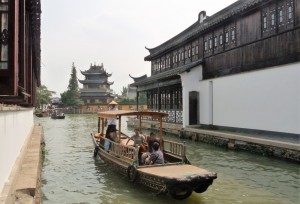 Thirty six bridges of different sizes, designs, and materials, cross the small rivers shaded by willow trees, and connect the ancient town. Whilst the narrowest bridges are only about a metre wide, Zhujiajiao can boast to have the largest stone arch bridge in Shanghai. Originally built in 1571 by the monk Xingchao of Cimen Temple in 1571, and then rebuilt in 1812, Fangsheng Bridge rests on five arches and is 70 metres long, and 5.8 metres high. The central arch is decorated with a stone relief of eight dragons surrounding a pearl, whilst the pillars at the ends are sculpted into lions.
Thirty six bridges of different sizes, designs, and materials, cross the small rivers shaded by willow trees, and connect the ancient town. Whilst the narrowest bridges are only about a metre wide, Zhujiajiao can boast to have the largest stone arch bridge in Shanghai. Originally built in 1571 by the monk Xingchao of Cimen Temple in 1571, and then rebuilt in 1812, Fangsheng Bridge rests on five arches and is 70 metres long, and 5.8 metres high. The central arch is decorated with a stone relief of eight dragons surrounding a pearl, whilst the pillars at the ends are sculpted into lions.Interestingly, ancient bridges can be recognized from more recent ones by looking at the height of their stairs, since in the old days, these were quite steep, whereas nowadays, steps are constructed in lower and more uniform positions, in order to be more easily accessible, especially to the elderly.
 Both these bridges and the town itself can be appreciated further by taking a cruise on one of the small bamboo gondolas that navigate the countless waterways of Zhujiajiao. A short trip and a longer one are offered, wherein the first takes passengers up and down the main canal, whilst the latter travels all over the town and back.
Both these bridges and the town itself can be appreciated further by taking a cruise on one of the small bamboo gondolas that navigate the countless waterways of Zhujiajiao. A short trip and a longer one are offered, wherein the first takes passengers up and down the main canal, whilst the latter travels all over the town and back.In order to explore this town, one needs about four hours. Narrow streets filled with different shops that sell typical souvenirs and various other products are often packed with tourists who tend to disrupt the serenity that one would have expected to find in such a location. The one kilometre North Streetis the best preserved ancient street in this suburb where one can observe the historical architecture. On the other hand, in Xijin Street, one can visit the classical Kezhi Garden with its distinguished combination of traditional Chinese and Western styles.
 A closer investigation of Zhujiajiao can offer much more to see, includingTongtianhe Medicine Shop, Qing Dynasty Post Office, Baoguo Temple, and Yuanjin Meditation Room. A selection of bars, restaurants, teahouses, and coffee shops provide the opportunity to rest and to taste some local cuisine whilst gazing out at the rivers or the main canal.
A closer investigation of Zhujiajiao can offer much more to see, includingTongtianhe Medicine Shop, Qing Dynasty Post Office, Baoguo Temple, and Yuanjin Meditation Room. A selection of bars, restaurants, teahouses, and coffee shops provide the opportunity to rest and to taste some local cuisine whilst gazing out at the rivers or the main canal.Having gone through a period of inactivity, where life crawled on at a slow pace, in these last years Zhujiajiao has gone through a rapid transformation as both locals and foreigners began to long for such preserved gems which can relate strongly to a bygone period in China.
Although some believe that the heavily touristic element on which the inhabitants have become highly dependent, is ruining the romantic nature of this sublime ancient water town, I can say that I enjoyed every minute which I spent in this exotic place. A heaven for photographers, Zhujiajiao provides an unforgettable experience of a surreal Chinese life which has succeeded to endure the test of time.
(This article was published in ESCAPE Suppliment which was issued with the Sunday Times of Malta dated 1st November 2015)
-
A SPECTACULAR WONDERLAND
Travelling at an impressive 300km/hr, a high-speed railway train took 5 hours and a half to reach Shanghai from Beijing. The voyage was impeccably comfortable. The train station was huge and amazing. Yet the actual surprise was the sheer difference between Beijing and Shanghai.
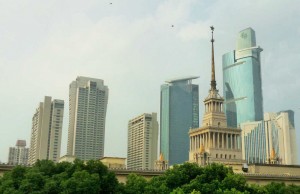 Traffic in Beijing was crazy but we had hardly left Shanghai’s train station when we were already blocked behind a long queue of cars. This is no wonder if one considers that about 24 million people live in this city. Recent modernization and progress in Shanghai have attracted many persons and in the last five years, the population tripled itself.
Traffic in Beijing was crazy but we had hardly left Shanghai’s train station when we were already blocked behind a long queue of cars. This is no wonder if one considers that about 24 million people live in this city. Recent modernization and progress in Shanghai have attracted many persons and in the last five years, the population tripled itself.Along the road, we observed that plain residential high rises were wide to an extreme. Besides them, luxurious or commercial high rises glistened beautifully as if in a bid to outshine the sun itself. Older traditional structures, together with buildings which formed part of the foreign concession areas, claimed the passers-by attention with their distinguished architecture.
Originally, a simple fishing village, Shanghai’s economy expanded rapidly once it was turned into a commercial port. Since at the time, traders could only use the sea or waterways as a means of transportation, Shanghai’s wide harbour began to attract numerous Chinese from various parts of China and also several foreigners. A society of immigrants started to flourish, each of which began to leave their influences in this new city.
In a few years, a large flat muddy area, overgrown with reeds, which was situated on the north bank of Huangpu River, was turned into a zone for foreigners and they named it the Bund. Starting from just a one-sided street, running in north-south direction, the location soon flourished with commercial buildings which increased further the significance and the economy of Shanghai.
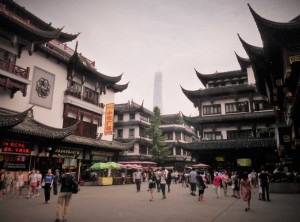 Yet in the mid-19th century, serious conflicts arose between the forces of Western countries and the Chinese, Qing dynasty, after China attempted to suppress the opium trade. Since the 18th century, foreign traders, particularly the British, had been illegally exporting opium which they imported from India. By the 19th century, this trade had grown dramatically, and the resulting widespread addiction in China began to cause serious social and economic disruption. Two Opium Wars broke out in which China was twice defeated and foreign concessions were established. It was in 1943, during the war between China and Japan, that the foreigners decided to abandon Shanghai.
Yet in the mid-19th century, serious conflicts arose between the forces of Western countries and the Chinese, Qing dynasty, after China attempted to suppress the opium trade. Since the 18th century, foreign traders, particularly the British, had been illegally exporting opium which they imported from India. By the 19th century, this trade had grown dramatically, and the resulting widespread addiction in China began to cause serious social and economic disruption. Two Opium Wars broke out in which China was twice defeated and foreign concessions were established. It was in 1943, during the war between China and Japan, that the foreigners decided to abandon Shanghai.Between the 1950s and the 1960s, some of the elder people who resided in Shanghai, proposed to the government to demolish these colonial buildings which reminded them of a bitter past. However eventually, it was decided to retain these structures since they represented a real part of the city’s history, even if painful.
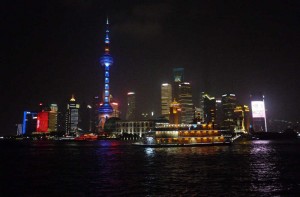 In the last 100 years, the Bund frontage buildings were repaired and reconstructed several times. Today, this area is embellished with prominent and elegant structures which contrast deeply with the opposite side of the Bund wherein some daring and bizarre high rises have been built. At night, the latter, turns into a spectacular wonderland as the colossal structures are fully illuminated in bright and colourful lights.
In the last 100 years, the Bund frontage buildings were repaired and reconstructed several times. Today, this area is embellished with prominent and elegant structures which contrast deeply with the opposite side of the Bund wherein some daring and bizarre high rises have been built. At night, the latter, turns into a spectacular wonderland as the colossal structures are fully illuminated in bright and colourful lights.A visit to this district which looks like a strange combination of London and New York, will reveal why it has become the symbol of Shanghai and the pride of many of its residents. Crowds of visitors gather daily at the Bund in order to enjoy the beautiful scenery on the Huangpu River which divides the old and the modern zones. Nonetheless, if one wants to enjoy the experience to the full, a night boat cruise is certainly recommended.
Our guide from Shanghai explained to us that this city has changed tremendously in these last years. In 1987, there were only 12 high rise buildings in Shanghai, whereas today, there are around 140,000. People have more money in their pockets, education facilities have increased, and life is more comfortable especially due to the efficient and far-reaching subway system. Yet he felt that simultaneously, Shanghai citizens were losing some important characteristics of the city. Indeed, when elders returned to the city after living far away, they could not find their way around as a number of the old landmarks have gone or are engulfed amongst the different modern landscape.
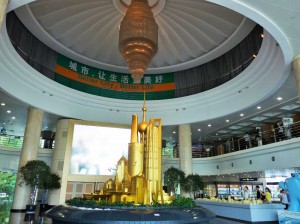 The repercussions of the sudden modernization of Shanghai have always been the focus of the authorities which are trying their very best to mitigate the impact of such changes. Their plans and projects are comprehensively described in the vast exhibitions which are displayed at the Shanghai Urban Planning Exhibition Hall which is located at the People’s Square. The centrepiece of the exhibition is a huge scale model of the city which shows all the existing and approved buildings. Moreover, a circular screen provides visitors with the opportunity to enjoy a fascinating 3D virtual tour around the city of Shanghai.
The repercussions of the sudden modernization of Shanghai have always been the focus of the authorities which are trying their very best to mitigate the impact of such changes. Their plans and projects are comprehensively described in the vast exhibitions which are displayed at the Shanghai Urban Planning Exhibition Hall which is located at the People’s Square. The centrepiece of the exhibition is a huge scale model of the city which shows all the existing and approved buildings. Moreover, a circular screen provides visitors with the opportunity to enjoy a fascinating 3D virtual tour around the city of Shanghai.Photo presentations explain how old buildings which were worth preserving and conserving, were carefully selected and restored, and then given a function in order to revive them. A particular example is the M50 contemporary art district which up to a few years ago was a disused industrial space. Another is the pedestrian walkway of Nanjing Road wherein 100 year old shops were amalgamated with new structures from where now, one can find speciality products of different trades standing next to famous brands.
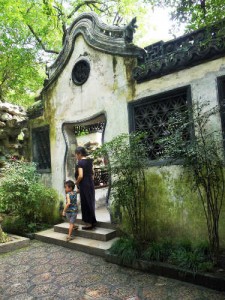 In Shanghai Old Street, which was reconstructed according to traditional Chinese style, visitors can roam around Yuyuan Market and absorb the allure of earlier times, whereas the nearby Yuyuan Gardens provide the beauty and serenity of a green environment. In the outskirts of Shanghai, ancient towns, such as Zhujiajiao, represent life of a distant and far simpler period in Shanghai. Concentrated under Shanghai’s Expo2010 motto ‘Better City, Better Life’, the main message of this place is to urge people to be proud as well as protective of their new city.
In Shanghai Old Street, which was reconstructed according to traditional Chinese style, visitors can roam around Yuyuan Market and absorb the allure of earlier times, whereas the nearby Yuyuan Gardens provide the beauty and serenity of a green environment. In the outskirts of Shanghai, ancient towns, such as Zhujiajiao, represent life of a distant and far simpler period in Shanghai. Concentrated under Shanghai’s Expo2010 motto ‘Better City, Better Life’, the main message of this place is to urge people to be proud as well as protective of their new city.A delightful wider look at the landscape of the city of Shanghai can be appreciated at a choice of revolving restaurants which are available on high towers. Definitely a surreal experience which gives you the ultimate impression of being on a totally different planet.
(This article was published in Escape Suppliment of The Sunday Times of Malta dated 13th September 2015)
-
IL-KULURI TAĊ-ĊINA (L-10 Parti) Il-Venezja taċ-Ċina
Issa li wasalna għall-aħħar artiklu, nittama li permezz ta’ din is-sensiela, irnexxieli ndewwaqkhom ftit minn dak li għandha x’toffri ċ-Ċina u li forsi wħud minnkhom, titħajjru wkoll iżżuruha.
Iddeċidejt li nħalli dan il-post apposta għall-aħħar, hekk kif għamlu anki lilna l-gwidi Ċiniżi li akkumpanjawna matul il-vjaġġ tagħna ġewwa dan il-pajjiż. Niftakar li tassew issorprendejt ruħi meta sirt naf illi f’dik il-modernità kollha tal-belt ta’ Shanghai, wieħed kellu l-opportunità li jżur erbgħa bliet antiki li nżammu bejn wieħed u ieħor fl-istil oriġinali tagħhom sabiex jibqgħu bħala xempju ħaj tal-passat ta’ dawk l-inħawi.
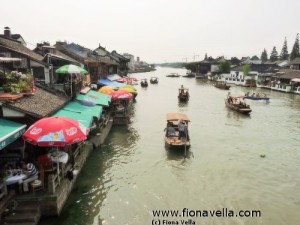 Aħna żorna lill-belt antika Zhujiajiao li hi l-aktar waħda miżmuma tajjeb. Hija magħrufa wkoll b’bosta ismijiet oħra bħal ‘Il-Belt tal-Ilma’, ‘Ix-Xmara tal-Perli’ u ‘Il-Venezja taċ-Ċina’. Tinsab fil-periferija ta’ Shanghai u ġiet mibnija f’forma ta’ rewwieħa fuq medda art li tkopri 47 kilometri kwadri. Ilmijietha jleqqu bħall-perli fuq pajsaġġ bl-isfond tal-muntanji u l-għadajjar.
Aħna żorna lill-belt antika Zhujiajiao li hi l-aktar waħda miżmuma tajjeb. Hija magħrufa wkoll b’bosta ismijiet oħra bħal ‘Il-Belt tal-Ilma’, ‘Ix-Xmara tal-Perli’ u ‘Il-Venezja taċ-Ċina’. Tinsab fil-periferija ta’ Shanghai u ġiet mibnija f’forma ta’ rewwieħa fuq medda art li tkopri 47 kilometri kwadri. Ilmijietha jleqqu bħall-perli fuq pajsaġġ bl-isfond tal-muntanji u l-għadajjar.L-istorja ta’ Zhujiajiao tmur lura 1700 sena għal żmien id-Dinastija Yuan, meta din il-lokalità bdiet isservi bħala ċentru tal-kummerċ għall-inħawi tal-kampanja tal-madwar. Il-pożizzjoni strateġiku tagħha, fejn jiltaqgħu numru ta’ xmajjar lokali, għenuha tiżviluppa malajr, l-aktar permezz tal-kummerċ tar-ross u tad-drapp, liema prodotti kienu jiġu trasportati mill-kampanja bid-dgħajjes, direttament għad-djar tan-negozjanti li kienu joqogħdu f’din il-belt. Dan wassal biex eventwalment Zhujiajiao kibret ħafna u ngħatat l-istat ta’ belt mill-Imperatur Wanli tad-Dinastija Ming.
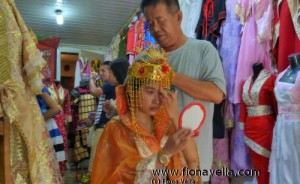 Din ix-xejra kummerċjali għadha teżisti sa llum f’din il-belt, hekk kif din hija miżgħuda b’għadd ta’ ħwienet li jbiegħu kull xorta ta’ prodotti u servizzi. Fost dawn, wieħed isib: oġġetti maħduma bi snajja’ tradizzjonali, ikel u ħlewwiet ta’ kull tip, ħwejjeġ partikolari b’kuluri sbieħ li jintlibsu għar-ritratti tat-tieġ, djar tat-tè, kafetteriji, ħwienet tax-xorb u restoranti.
Din ix-xejra kummerċjali għadha teżisti sa llum f’din il-belt, hekk kif din hija miżgħuda b’għadd ta’ ħwienet li jbiegħu kull xorta ta’ prodotti u servizzi. Fost dawn, wieħed isib: oġġetti maħduma bi snajja’ tradizzjonali, ikel u ħlewwiet ta’ kull tip, ħwejjeġ partikolari b’kuluri sbieħ li jintlibsu għar-ritratti tat-tieġ, djar tat-tè, kafetteriji, ħwienet tax-xorb u restoranti.L-arkitettura distinta tal-post hija mżejjna bi djar li jmorru lura għall-mijiet tas-snin. Bosta mid-djar antiki ta’ din il-belt iħarsu fuq l-ilmijiet tax-xmara u jistkennu għad-dell ta’ għadd ta’ siġar taż-żavżava li jkomplu jagħnu l-post b’element romantiku qawwi.
Madanakollu, l-aktar li jiġbdu l-attenzjoni huma ċertament is-36 pont tal-ġebel li jgħaqqdu din il-belt flimkien. Dawn il-pontijiet inbnew matul id-Dinastiji Ming u Qing u jintgħarfu minn dawk ġodda permezz tat-turġien li jwasslu għalihom, minħabba li dari, dawn kienu jkunu aktar għoljin. Infatti llum fiċ-Ċina, dat-tip ta’ taraġ jinħadem bil-ħsieb tal-konvenjenza għall-pubbliku, b’mod partikolari għall-anzjani, u għaldaqstant hu mibni aktar baxx ħalli jkun aktar faċli biex titilgħu.
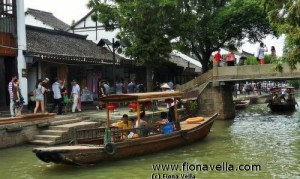 Anki t-tul ta’ dawn il-pontijiet ivarja ħafna, tant li wħud huma pjuttost qosra filwaqt li oħrajn huma twal mhux ħażin. Fil-fatt, Fangsheng, li hu l-aktar pont popolari f’din il-belt, hu għoli 5.8 metri, twil 70 metru u jserraħ fuq ħames arkati simettriċi. Oriġinarjament, dan inbena fl-1571 mill-patri Xingchao tat-Tempju Cimen. Iżda aktar tard, fl-1812, huwa reġa’ ttella’ mill-ġdid. L-arkata ċentrali ta’ dan il-pont ġiet dekorata bi skultura fil-ġebel ta’ tmien draguni jduru ma’ perla, filwaqt li t-truf tal-kolonni ġew skolpiti f’għamla ta’ ljuni.
Anki t-tul ta’ dawn il-pontijiet ivarja ħafna, tant li wħud huma pjuttost qosra filwaqt li oħrajn huma twal mhux ħażin. Fil-fatt, Fangsheng, li hu l-aktar pont popolari f’din il-belt, hu għoli 5.8 metri, twil 70 metru u jserraħ fuq ħames arkati simettriċi. Oriġinarjament, dan inbena fl-1571 mill-patri Xingchao tat-Tempju Cimen. Iżda aktar tard, fl-1812, huwa reġa’ ttella’ mill-ġdid. L-arkata ċentrali ta’ dan il-pont ġiet dekorata bi skultura fil-ġebel ta’ tmien draguni jduru ma’ perla, filwaqt li t-truf tal-kolonni ġew skolpiti f’għamla ta’ ljuni.Jekk tkun qed iżżur dan il-post, m’għandikx titlef l-opportunità li tirkeb xi waħda miż-żewġ tipi ta’ dgħajjes li ssib fuq ix-xmara, ħalli b’hekk tosserva l-post minn perspettiva oħra. Il-gondola taħdem fil-kanali u tgħaddi minn taħt il-pontijiet, u permezz tagħha tista’ tmur dawra qasira sal-kanal prinċipali, inkella tagħżel distanza itwal li tieħdok madwar il-belt kollha. Min-naħa l-oħra, dgħajjes akbar joffrulek vjaġġ sal-għadira li hemm fl-inħawi.
Zhujiajiao hija mfittxija ħafna mit-turisti imma anki min-nies tal-lokal li spiss imorru hemm fil-ġranet tal-mistrieħ jew fil-festi. Għaldaqstant, dan il-post għandu t-tendenza li jkun iffullat mhux ħażin u wieħed irid jiddedikalu almenu nofs ta’ nhar sħiħ jekk jixtieq iduru sewwa.
Hemm min hu tal-opinjoni illi din il-belt saret artifiċjali wisq minħabba li saret tiddependi ħafna mit-turiżmu. Iżda ngħid għalija, Zhujiajiao hija lokalità indimentikabbli li wrietni xena surreali ta’ kif kienet il-ħajja fiċ-Ċina tal-passat.
(Dan l-artiklu ġie ppubblikat fit-Torċa tal-15 ta’ Marzu 2015)
Travelogue
Archives
| M | T | W | T | F | S | S |
|---|---|---|---|---|---|---|
| « Jan | ||||||
| 1 | 2 | 3 | 4 | 5 | 6 | 7 |
| 8 | 9 | 10 | 11 | 12 | 13 | 14 |
| 15 | 16 | 17 | 18 | 19 | 20 | 21 |
| 22 | 23 | 24 | 25 | 26 | 27 | 28 |
| 29 | 30 | 31 | ||||
Recent Posts
- A MATTER OF FATE
- MALTA’S PREHISTORIC TREASURES
- THE MAGIC IS IN THE DETAIL
- THE SELLING GAME
- NEVER FORGOTTEN
- Ġrajjiet mhux mitmuma – 35 sena mit-Traġedja tal-Patrol Boat C23
- AN UNEXPECTED VISIT
- THE SISTERS OF THE CRIB
Comments
- Pauline Harkins on Novella – Li kieku stajt!
- admin on IL-KARNIVAL TRAĠIKU TAL-1823
- Albert on IL-KARNIVAL TRAĠIKU TAL-1823
- Martin Ratcliffe on Love in the time of war
- admin on 24 SENA ILU: IT-TRAĠEDJA TAL-PATROL BOAT C23